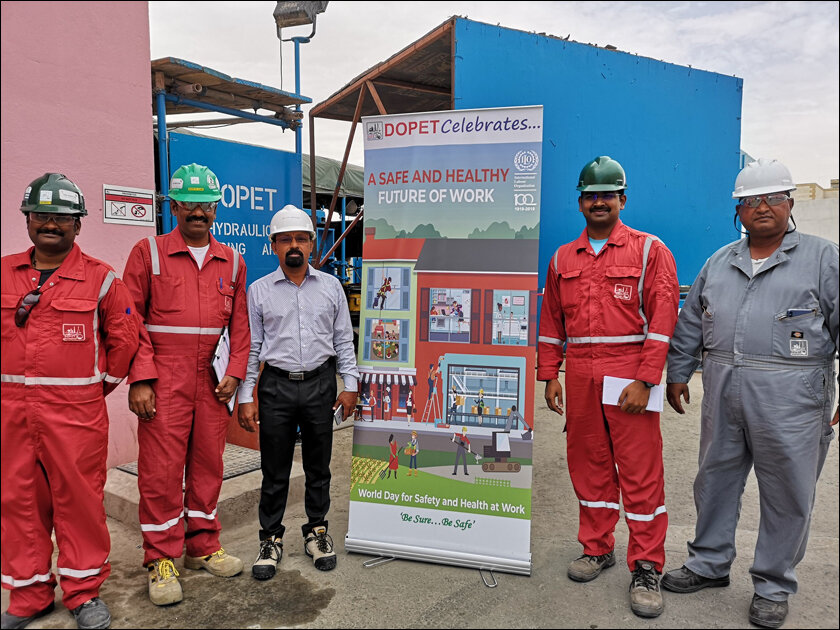Globally, 2.3 million women and men succumb to work-related incidents every year according to the ILO. Can technology help avert this?
Netflix’s recent ‘The Railway Men’ remains a well-made dramatized show retelling the sordid saga of the Bhopal Gas Tragedy of 1984. The show reveals the courage of characters, the need for effective compliance, the role of the research community, as well as the aspects of industrial security.

More importantly, it is a stark reminder of the need to have technology to tackle EHS (Environment, Health & Safety) issues as well as better ESG (Environment, Safety and Governance) controls.
Both EHS and ESG compliance are expected to result in better transparency and risk identification which in turn helped avert industrial disasters, reduce workplace hazards, and save input costs with circular-economy initiatives.
Technology may seem like a safety net to avert physical hazards. But a research report (made available via Elsevier) identified 560 accidents between 2010-20 alone claiming 2,500 lives and injuring over 8,500 individuals. The authors (Lavanya Suresh & Mousami Prasad) also clarified that their study on industrial disasters was based only on conservative estimates.
A more recent IndiaSpend report attributed statistics from India’s ministry of Labour and the Employment Directorate General Factory Advice Service & Labour Institutes (DGFASLI) to present a more shocking analysis – 11 workers were injured each day between 2017 and 2020.
While it is true that disasters originating from the manufacturing industry have been blamed for inflicting physical damage, risks from the services industry are equally damaging. The systemic risk from a failure of a large service provider is too big to accommodate – recent cybersecurity failures, or the near-recent collapse of “too-big-to-fail banks” of 2009. No other reason can compel India Inc to adopt ESG better than the proposition of a disaster-free and occupationally safe workplace.
ESG or EHS?

ESG may seem different from EHS (Environment Health and Safety) but remain related concepts. EHS primarily focuses on an organization’s operational aspects within the workplace addressing issues such as pollution control, workplace safety, and employee health. ESG encompasses a range of qualifiers beyond a company’s operational boundaries.
For better reference, ESG may include factors related to the environmental performance, social aspects such as diversity, inclusion, labor practices, and community engagement, as well as governance, which involves issues like corporate ethics, leadership, and board diversity.
Globally, ESG has evolved beyond keywords ever since a United Nations program coined the word in October 2005 although DEI has been around since the 1960s. More recently, several regulatory bodies have implemented rules and norms with an objective to institutionalize ESG practices. The EU, for instance, has promulgated entities such as SFDR (Sustainable Finance Disclosure Regulation), Taxonomy regulation, NFRD (non-financial reporting directive), CSR Directive (CSRD) and green bonds. Countries such as Germany have added more nuances to the ESG reporting – Supply Chain Due Diligence Act whereas in the US the SEC has created a taskforce on climate and ESG taskforce with the intention to identify gaps in public company disclosures.
In India, the SEBI has recently mandated India’s Top 1000 firms by capitalization to provision a ‘Business Responsibility and Sustainability report’ (BRSR) starting from fiscal year 2022-23. SEBI’s compliance is based upon reasonable assurances in the form of 150 indicators across 9 ESG attributes.
FINDING THE PURPOSE

ESG and DEI standards have something in store for everyone – consumers want it; investors find better RoI; there’s salary-growth for employees; lower operational expense for manufacturers; a viable risk-aversion strategy for brands; and a cherry – they are too good for the planet. Contrary to initial perception, consumers were indeed influenced by sustainability. An IBM 2021 report identified that 93% of consumers were influenced by sustainability post the pandemic.
Another IBM study in 2022 confirmed that 49% of respondents paid more than a 59% premium just to buy a sustainable or socially responsible product or service. Consulting firm McKinsey which has done significant analysis in the last ten years on ESG, came with a definitive observation – “Products that didn’t have ESG-related claims on their labels grew, on average, 4.7 percent per year, while products that did have ESG claims grew 6.4 percent.”
Besides the need to accomplish ESG and EHS objectives, there is a significant career avenue for professionals. A ET report found Indian institutes such as IIMs having commenced courses in ESG and sustainability. LinkedIn recently released a detailed report indicating an 8 percent growth in “Green jobs” between 2016 – 21. The study ranks India fifth in a list of top-25 countries with specific skills around green. In what appears as a catchy headline, job posting site Indeed, claimed that the ESG sector saw a growth of 233 percent between April 2019 to Apr 2023.
Then the trends around ESG investing too have witnessed a spurt with an HBR article stating that the “Real goal (with ESG reporting) is to assure shareholder profits.” Although some remarks on the over 5,000 comments received on the SEC’s proposal on mandatory disclosures for carbon emissions presents a fresh worry – can ESG deliver what it is intended to?
THE TECH ROLE

The efficiency of ESG and DEI campaigns relies majorly upon availability and dependability of technology – both hardware peripherals and software integrations. Besides technology infrastructure such as laptops, printers, webcams, the list includes new-age sensors and peripherals to keep a track of – temperature, air, water, carbon dioxide, energy, waste, emissions etc. There is also a need for software integration to connect data-points such as usage of power with productivity. KPIs (key performance indicators) such as ethics, employee engagement, standards, and vendor relationship may be far more complicated than previously thought.
All of this may seem complex, but this is where an ecosystem of startups, consultants, auditors, and rating agencies could provide much-needed industrial support. From environmental monitoring using IoT devices to blockchain technology for supply chain transparency, technology ensures accuracy and transparency of data. Technology also plays a critical role in ESG risk management, stakeholder engagement, and communication by providing tools for early warnings, predictive analytics, and online platforms for meaningful engagement with investors, customers, and employees.
Undoubtedly, technology has a crucial role in improving safety in several industries. Eliminating accidents or sector-specific risks may however still remain a complex challenge owing to sophistication, human errors, organizational limitations, and even cost constraints.
In case you missed:
- None Found









